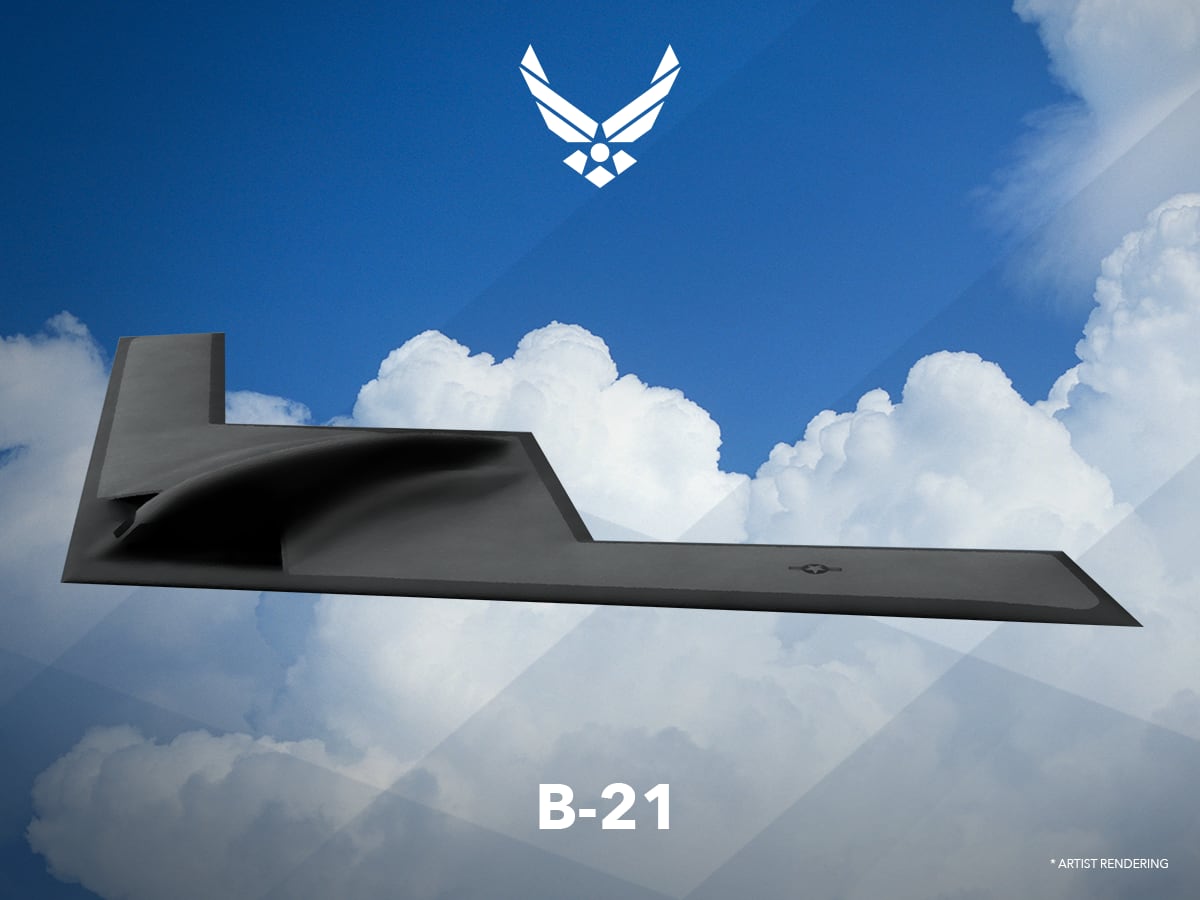WASHINGTON — Don’t hold your breath waiting for the contract value of the B-21 Raider to be revealed. While the U.S. Air Force’s top general reviews the bomber program every few months to see whether new details can be released, it will be “some time” before the service divulges more cost information, the Air Force undersecretary said Oct. 12.
Out of the Air Force’s top three acquisition priorities, the B-21 Raider is its most secretive, with only a few details disclosed to the public, such as the estimated price per aircraft and a list of the major contractors.
The service has taken a hard line against releasing the value of the development contract awarded to Northrop Grumman in 2015, with officials saying that doing so would give adversaries information that would allow them to extrapolate on the bomber’s design.
But as the service’s No. 2 civilian, Air Force Under Secretary Matt Donovan finds himself in an interesting predicament. Just months ago, as the majority policy director for the Senate Armed Services Committee, he helped helm committee Chairman John McCain’s arguments in favor of releasing more information on the B-21 Raider, including the contract value.
Now that Donovan is working for the Air Force, part of his job is to support and implement the decisions of Chief of Staff Gen. David Goldfein and Secretary Heather Wilson.
The irony isn’t lost on Donovan.
“It’s funny because they knew I was the guy that was always pushing on that from the Senate side [to release the B-21 contract information],” he told Defense News in his first-ever interview.
“One of the things that I’ve been able to do is come over here and say: ‘We need to release things as sure as we know that we can.’ And I know that Gen. Goldfein still does a review every couple of months, and the B-21 folks come talk to him and give him an update because he is very responsive to Sen. McCain’s desires to make sure the American people know.”
Even so, Donovan added that ”it will be some time” before Goldfein and Wilson feel comfortable disclosing the contract value, but “if conditions change as we get farther along in the program, I think the chief and the secretary will certainly consider that and release as much as they can.”
RELATED

Air Force leaders claim that the B-21 program is going swimmingly and has remained on budget and on schedule. Earlier this year, Gen. Stephen Wilson, the Air Force’s vice chief of staff, told lawmakers it had recently completed its preliminary design review.
The service plans to buy at least 100 Raiders — although that number could change as a result of the Trump administration’s defense strategy review and the Air Force’s bomber road map — at a price of about $550 million (in 2010 dollars) per copy.
The engineering and manufacturing development phase is being carried out under a separate, cost-plus contract that is estimated to amount to about $21.4 billion.
“The program is on track,” Lt. Gen. Arnold Bunch, the service’s top uniformed acquisition official, said Tuesday. “What I will say is that we are marching to the acquisition program baseline timelines that we’ve established, and we don’t have anything … that has risen to a red flag.”
Even though it will be up to Goldfein and Wilson to make the final call on what B-21 information to release and when, Donovan said he will continue to turn a critical eye on the program. In the past two months since he was sworn in as undersecretary, he visited Northrop Grumman facilities to get an update on the Raider’s progress.
RELATED

And although his main priority is to support Wilson and Goldfein during the budget development process, Donovan also wants to help broker a better relationship between the Air Force and Congress. The service and McCain, R-Ariz., have had a famously contentious relationship over a number of programs such as the B-21 and F-35 — an assessment Donovan said he couldn’t dispute. But it has improved since Goldfein took the chief of staff position.
“The Air Force used to submit their budget and then go tell the Congress what they were going to do. In other words, a fait accompli,” though Goldfein would talk to Senate Armed Services Committee staffers like Donovan about emerging changes to force structure and weapons programs, he said. “Then I would bring him in to see Sen. McCain, and he would have a good discussion with Sen. McCain and get his advice.”
That process is how the Air Force and the committee eventually worked through disagreements about the A-10 Warthog, he said.
Valerie Insinna is Defense News' air warfare reporter. She previously worked the Navy/congressional beats for Defense Daily, which followed almost three years as a staff writer for National Defense Magazine. Prior to that, she worked as an editorial assistant for the Tokyo Shimbun’s Washington bureau.








